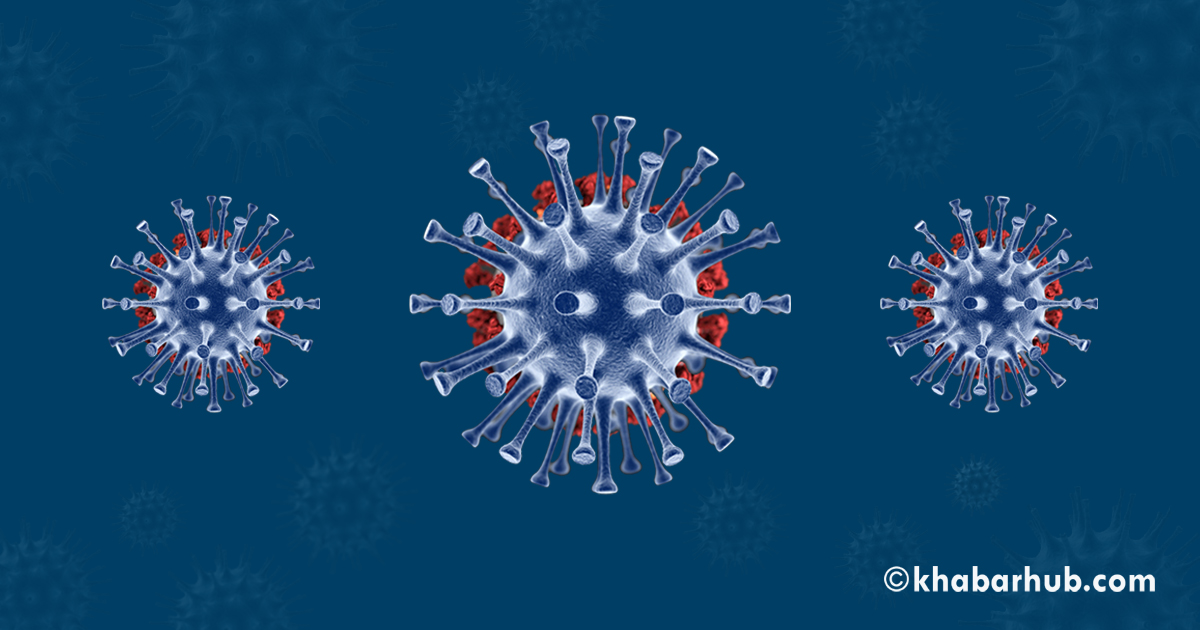0%

(Image for Representation)
KATHMANDU: Two traffic police had tested positive for COVID-19 during PCR tests conducted on 508 swab samples at Singh Durbar on July 19.
In the third week of June, while testing the swabs of 5,000 people at different 12 places in the Kathmandu Valley, only three persons tested positive for coronavirus. In other words, the rate of those who tested positive for swabs was not even 1 percent. But now the situation is very different.
Similarly, 519 swabs were collected on August 25 in the Budhanilkantha municipality area, and 60 people (11.56 percent) were found to be infected with the COVID-19.
“We collected and tested at least 10 people from each ward, including businessmen from all walks of life.” The rate of infection was also high when the swabs of people who were not in contact tracing were taken out, ‘said Uddhav Prasad Kharel, Mayor of Budhanilkantha.
He said that it is estimated that 15 percent of the people in the city are infected. “The prohibition order has prevented the movement of neighbors and others,” he said.
While collecting swabs of 108 persons in Kathmandu Metropolitan City-4 on August 25, 15 people were found positive. A swab test of 126 persons in the Mahabauddha area on September 26 after a woman from India was found to have been infected showed that 30 people (about 24 percent) were coronavirus positive.
Here, PCR was done for both those who were in contact tracing and those who were not. “It simply came to our notice then. Earlier, the number of positive cases was low, ‘said EDCD director Dr. Vasudev Pandey said, “First we had to find out who tested positive, now we have to find out who got the negative.”
Although the responsibility of contact tracing has been given to the local level, EDCD is collecting swabs in certain areas in all the three districts of the valley to find out the status of contact tracing and community level infection. “Everywhere we look today, the tide of protectionist sentiment is flowing. Pandey said, ‘Antibody testing is needed to understand the current situation in the community. It is being prepared. ‘
According to the Ministry of Health, the infection rate in PCR tests across the country has reached 5.9 percent so far. The rate was only 5.2 percent a month ago. The death rate has also risen. The death toll rose to 0.6 percent on Friday from 0.2 percent a month ago.
“Now the number of infected people has reached a high level”, said Dr. Pandey, adding, “Which is also confirmed by the facts. The EDCD said it had conducted community-level tests at Koteshwor, Baluwatar, Chabahil, Maharajgunj, Budhanilkantha and Mahabauddha areas of Kathmandu, where the infection rate was high.
According to Gyan Bahadur Oli, the focal person of the Coronavirus Prevention and Control Team of the Kathmandu Metropolitan Health Division, more than 200 people have been infected in Balaju and Koteshwor areas of Kathmandu. Maharajgunj, Dhumbarahi, Baneshwor, Tripureshwar, Kalimati, Kalanki and Swayambhu are among more than 100 infected areas.
In addition, there are more than 100 infected people in Bagbazaar. Of the infected people in Kathmandu, 55 percent are in the Kathmandu metropolis alone. As of Thursday, 3,108 people have been infected in the metropolis.
In Bhaktapur, Kaushaltar, Gatthaghar, Ward No. 3 of Madhyapur Thimi Municipality and Kupandol, Sanepa, Chasal and Gabahal of Lalitpur Metropolitan Area are highly infected.
COVID-19 spreads to community level in Kathmandu Valley
The percentage of positive rate (PPR) for the last seven days has been calculated on Thursday and the average in the Valley is around 11.70 while the national average is 8.7.
According to public health experts, a PPR above 5 indicates that the infection is widespread at the community level or that the scope of testing is not wide.
After the relaxation of July 21, the number of infected people doubled to 82.5. This means that the number of infected people is expected to double in about 82 days.
However, leaving that mathematical estimate far behind, the number of infected doubled in about 40 days.
According to a report published on the international website Statista.com on August 31, it took 34 days for the number of infected people in Nepal to double.
According to the same report, the number of infected people in the world seems to have doubled in 50 days.
Analyzing the data as of August 30, it may take about 26 days for the number of infected people to double. Despite the ban in most of the infected districts, the number of infections has decreased.
The most frightening aspect of these situations is death. According to another report published on Statista.com on August 31, the number of deaths due to coronavirus in Nepal has doubled in just 14 days.
Nepal ranks ninth in terms of risk of coronavirus. The average number of deaths in the world has doubled in 79 days. The death toll in China, which was the first to be infected with the coronavirus, took 190 days to double, the report said.
With a higher PPR of 11 in the Valley and an average of PPR 9 in the country, the community can be considered infected.